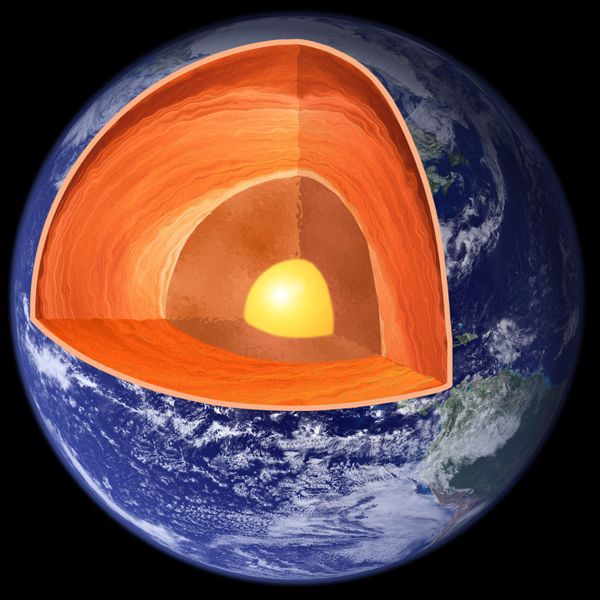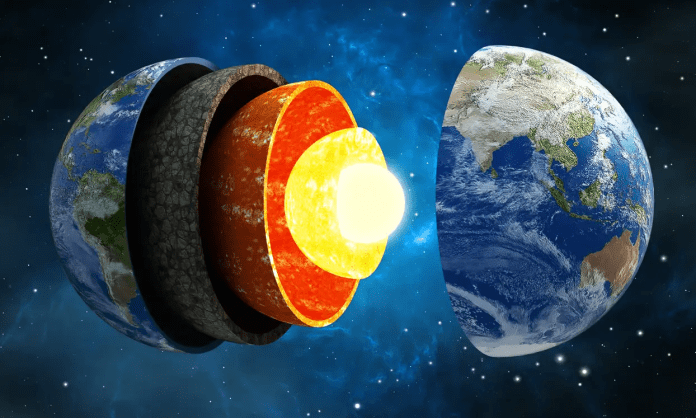A Breakthrough discovering ocean in Earth Sciences
In a Scientific Breakthrough by Jacobsen that could reshape our understanding of Earth‘s geology and water cycle, scientists have identified a colossal reservoir of water located deep beneath the Earth’s crust. This subterranean sea, hidden within the mantle, contains an amount of water that rivals the volume of the world’s under water surface.
The Discovery
The discovery was made using data from seismic waves generated by earthquakes. By analyzing the speed and path of these waves as they travel through the Earth’s interior, researchers identified areas where the waves slowed down. This slowdown indicated the presence of water, trapped within a mineral called ringwoodite, a high-pressure form of olivine. The research was led by geophysicists at Northwestern University, with key findings published in the journal *Nature*.
Ringwoodite: The Key to the Hidden Ocean
Ringwoodite, named after the geologist Alfred Ringwood, forms under extreme pressure and temperature conditions found at depths of 410 to 660 kilometers (255 to 410 miles) below the Earth’s surface, in a region known as the transition zone. This mineral has a unique ability to absorb water, not in the form of liquid, but as hydroxide ions (OH⁻) within its crystalline structure.
The samples of ringwoodite studied were obtained from volcanic eruptions that brought material from the deep mantle to the surface. These samples revealed that the mineral contained about 1% water by weight, suggesting a vast reservoir when extrapolated to the scale of the transition zone.

Implications for Earth’s Water Cycle
The existence of this massive water reservoir has profound implications for our understanding of the Earth’s water cycle. Traditionally, the water cycle has been thought of as a surface phenomenon, involving the movement of water between the oceans, atmosphere, and surface through processes like evaporation, precipitation, and runoff. However, the discovery of deep-Earth water challenges this view, indicating a more complex, multi-layered system.
This hidden water could play a critical role in the long-term regulation of the surface. It might act as a buffer, absorbing water during periods of high sea levels and releasing it back to the surface during lower sea levels, thus contributing to the stability of Earth’s climate over geological timescales.
Geological and Geophysical Significance
From a geological perspective, the presence of water deep within the mantle could influence mantle convection, the process responsible for plate tectonics. Water acts as a lubricant, facilitating the movement of tectonic plates. This could explain certain anomalies in plate movement and provide new insights into the dynamics of Earth’s interior.
Moreover, the water-rich transition zone might affect the generation of magma. Water lowers the melting point of rocks, so its presence could enhance volcanic activity and lead to the formation of new crustal material.
Future Research and Exploration
The discovery of the under water opens up numerous avenues for future research. Scientists aim to better understand the distribution and movement of water within the mantle, the exact mechanisms by which it is stored and transported, and how it interacts with surface processes. Advanced seismic imaging techniques and laboratory experiments simulating the extreme conditions of the transition zone will be crucial in this endeavor.
Additionally, the study of ringwoodite and other hydrous minerals could provide clues about the origins of Earth’s water. One hypothesis is that water was delivered to Earth by comets and asteroids during the early stages of the solar system’s formation. The deep-Earth water reservoir might hold records of these primordial conditions, offering a glimpse into the planet’s formative years. The discovery of a colossal ‘ocean’ beneath the Earth’s crust marks a monumental milestone in geosciences. It challenges existing paradigms about the Earth’s water cycle, influences our understanding of geological processes, and opens up new frontiers for scientific exploration. As researchers continue to unravel the mysteries of this hidden water, we can anticipate a deeper and more integrated understanding of our planet’s inner workings.





